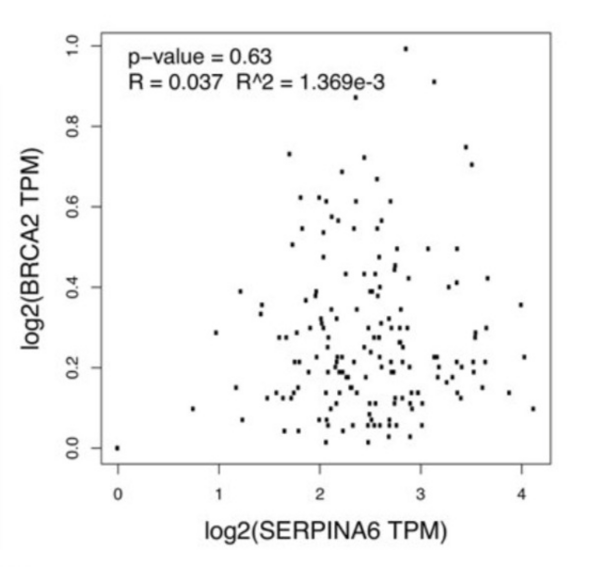Expressional correlations between SERPINA6 and pancreatic ductal adenocarcinoma-linked genes
(1) Tenafly High School, Tenafly, New Jersey, (2) Georgetown University, Washington, D.C.
https://doi.org/10.59720/21-050
Pancreatic ductal adenocarcinoma (PDAC) is the most common form of pancreatic cancer, with early diagnosis and treatment challenges. When any of the genes KRAS, SMAD4, TP53, and BRCA2 are heavily mutated, they correlate with PDAC progression. Cellular stress, partly regulated by the gene SERPINA6, also correlates with PDAC progression. When SERPINA6 is highly expressed, corticosteroid-binding globulin inhibits the effect of the stress hormone cortisol. We hypothesized that the expression of SERPINA6 would inversely correlate with the expression of PDAC-linked genes. Healthy pancreatic expression control data was sourced from GTEx, while mutated PDAC experimental expression data was sourced from TGCA. Eight scatterplots with p, R, and R2 values were produced via Correlation Analysis on gene profiling database GEPIA2. A lack of experimental statistical significance of the KRAS and TP53 scatterplots indicate the genes do not correlate with SERPINA6. SMAD4 scatterplots demonstrated statistical significance on both ends with a direct trend, indicating a potential correlation with SERPINA6. While the control scatterplot of BRCA2 exhibited statistical insignificance, the experimental scatterplot exhibited significance in addition to a hypothesized inverse trend. This may indicate a tumor-specific correlation between BRCA2 and SERPINA6. Further exploring the viability of this potential expressional correlation may build on lacking early diagnosis techniques and further supplement the scientific community’s interest in the mind-body stress connection.
This article has been tagged with: